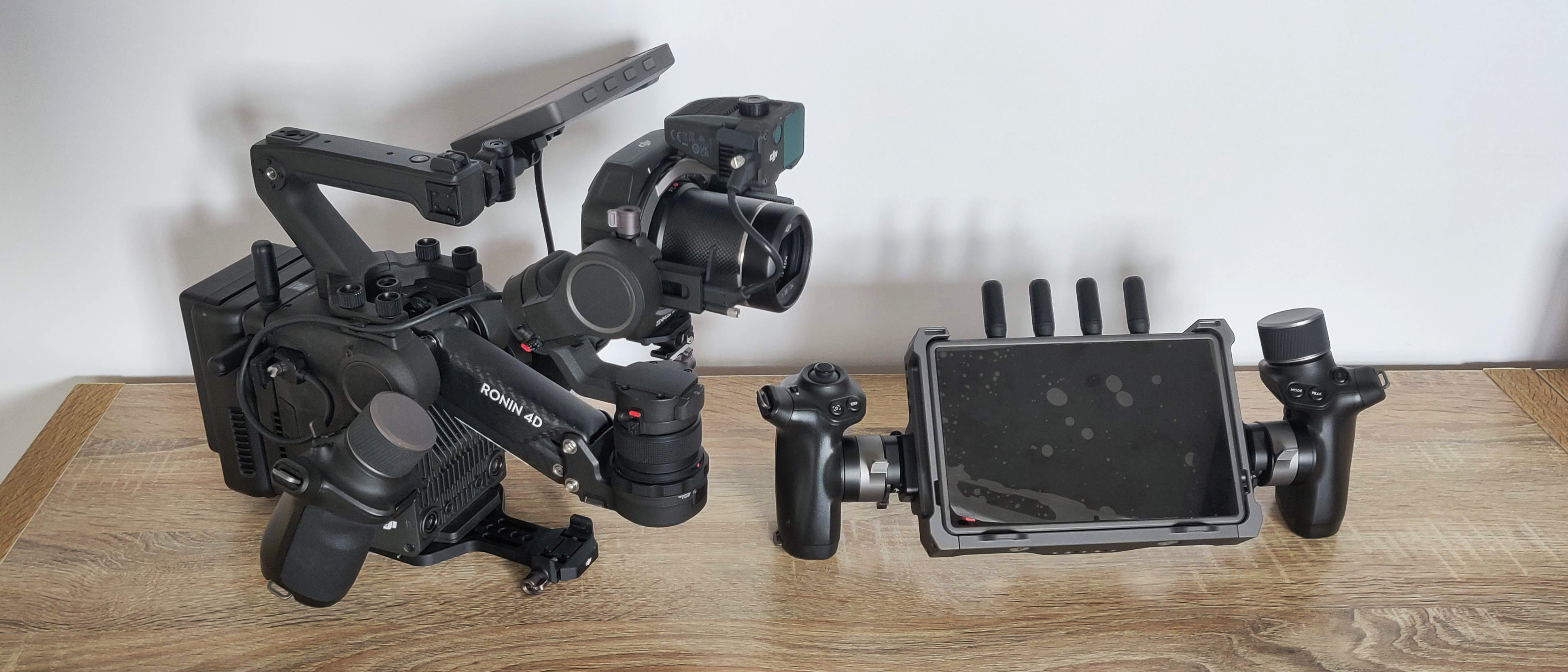Digital Camera World Verdict
The DJI Ronin 4D really is a cinema camera from the future, offering a mix of traditional cinema features and then amplifying them with its gimbal capabilities. It's a camera dedicated to hardcore cinematographers who deal with a lot of client work, and its method of filmmaking might not be for everyone, but for those who need a cinema rig and gimbal all-in-one package, you can't get much better than the Ronin 4D.
Pros
- +
All-in-one package
- +
Built-in ND filters
- +
Solo or crew operation
Cons
- -
A lot of learning
- -
Non-standard battery type
- -
Proprietary media need for 6K
Why you can trust Digital Camera World
The DJI Ronin 4D is the first cinema camera developed and produced by DJI, and it feels like the company has taken traditional cinema methods and standards and turned them on their head during the development.
Essentially, you are getting a revolutionary camera rig that is capable of producing 6K video, along with offering advanced stabilization thanks to the gimbal attached to the camera. The 4D in Ronin 4D refers to the camera's ability to activate a built-in gimbal arm that can be turned on or off by a push of a button, giving the camera operator 4-dimensional stabilization across the whole image.
The effect of this is clear and smooth cinematic footage whilst using the camera for run-and-gun documentary style shooting as well as shake free footage in cinematic environments.
Pre-order the DJI Ronin 4D at B&H (US)
Pre-order the DJI Ronin 4D at Adorama (US)
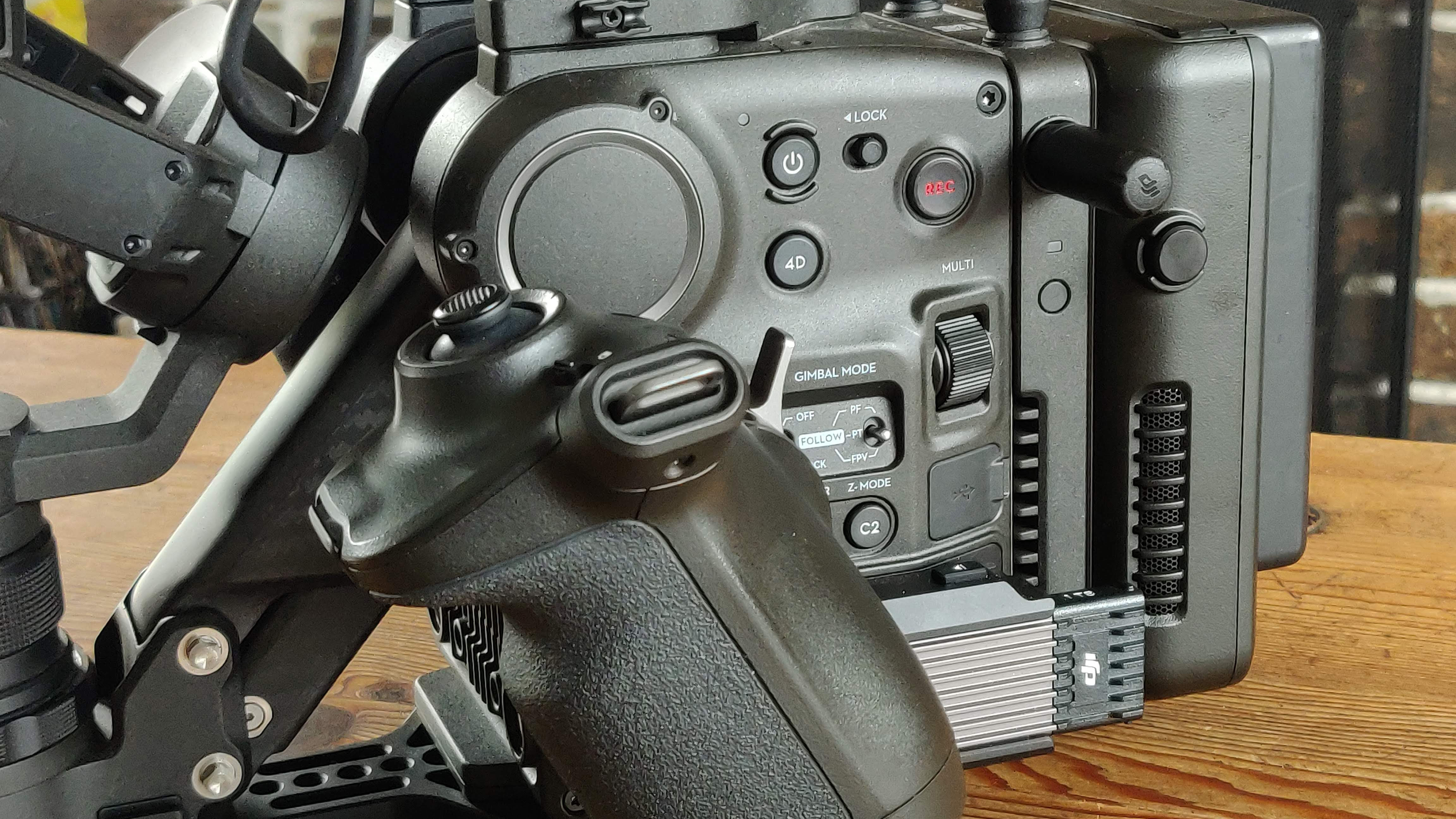
DJI Ronin 4D Specifications
Sensor: Full frame CMOS
Stabiliser: 4-axis
ISO range: 200-12,800 Dual Native ISO 800/ 5000
Dynamic range: 14 stops
Lens mount: DJI DL mount
LCD: 5.5in LCD touchscreen, 1920x1080
Auto focus: Contrast detect, tracking
Recording format: ProRes 422 HQ
6008 x 3168 at 23.98p/24.00p/25p/29.97p/50p/59.94p
4096 x 2160 at 23.98p/24.00p/25p/29.97p/48.00p/50p/59.94p/72p/96p/100p/119.88p
2048 x 1080 at 23.98p/24.00p/25p/29.97p/48.00p/50p/59.94p/72p/96p/100p/119.88p
H.264 4:2:0 10-Bit
4096 x 2160 at 23.98p/24.00p/25p/29.97p/48.00p/50p/59.94p/72p/96p/100p/119.88p
2048 x 1080 at 23.98p/24.00p/25p/29.97p/48.00p/50p/59.94p/72p/100p/119.88p
Connectivity: USB-C, HDMI, 3.5mm stereo input for mic and timecode
Storage: 1x CF express, 1x DJI ProSSD
Battery: DJI Proprietary
Dimensions (WxHxD): 309 x 290 x 277 mm (With Protrusions)
Weight: 10.3 lb / 4.67 kg (with Battery, Grips, Handle, Monitor, Recording Media)
DJI Ronin 4D key features
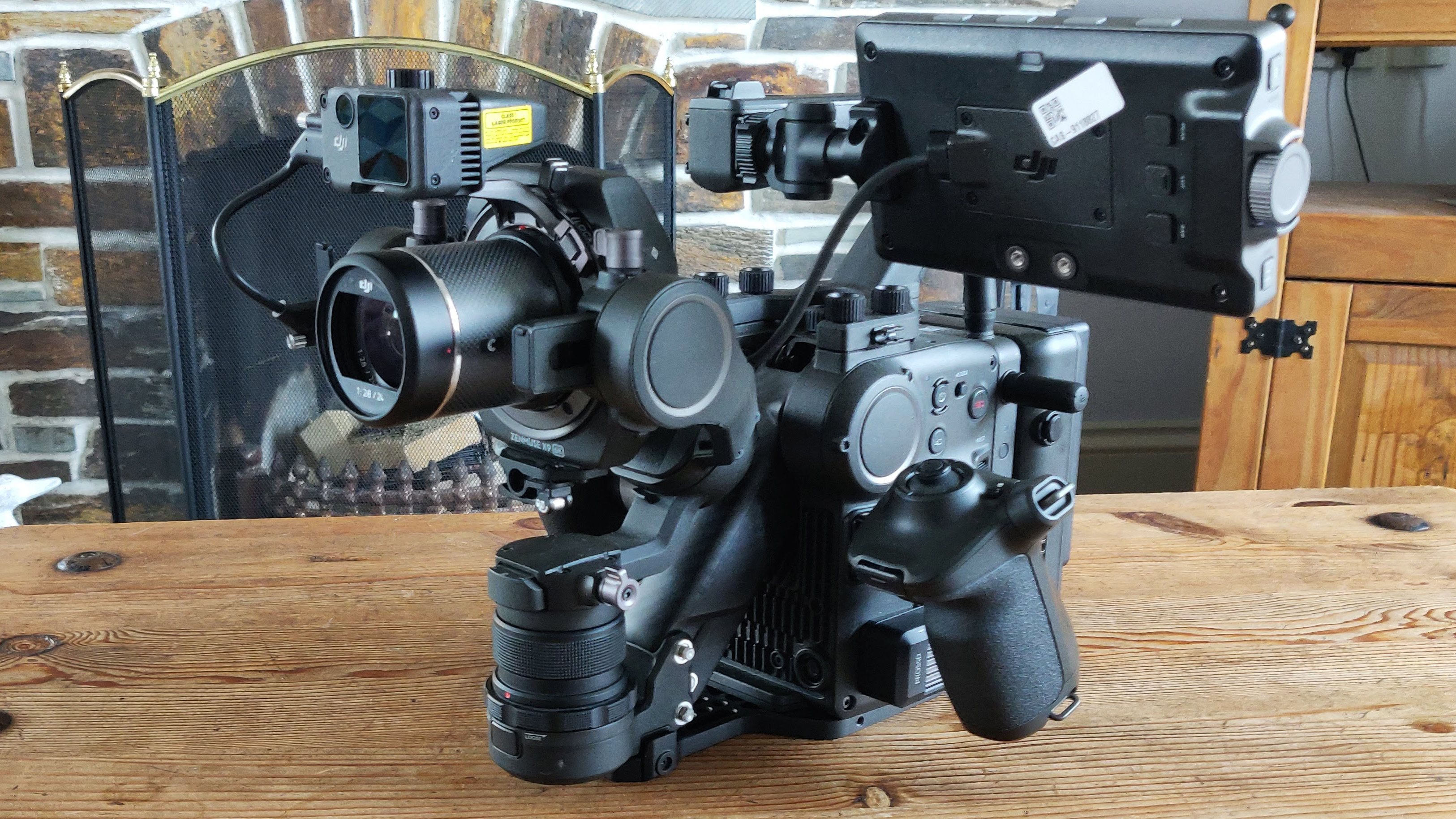
You should think of the Ronin 4D as two halves working united to produce an outstanding product – the body which consists of all the cameras controls and gimbal arm, while the second half is the DJI Zenmuse X9 camera itself.
The Zenmuse x9 is the flagship full frame camera from DJI, offered on their latest professional drone, the DJI Inspire 3 the X9 is capable of recording up to 6K at 60fps in ProRes 422 HQ and H.264 video, while delivering other professional formats like 4K recording at 120 fps. It offers 14 stops of dynamic range, along with a Dual native ISO of 800 and 5,000.
On bright days or heavily-lit sets you can take advantage of the 9-stop built in ND filters that range from ND2 to ND 512 or ND 0.3 to ND 2.7, These filters can be quickly changed thanks to its electronic motorized system and going from the lowest to highest density takes a few seconds – which could come in very handy when you're on a set, or following a subject from say, inside a house to outside in one take and you want everything to have the same feel and look.
DJI Ronin 4D Build & handling
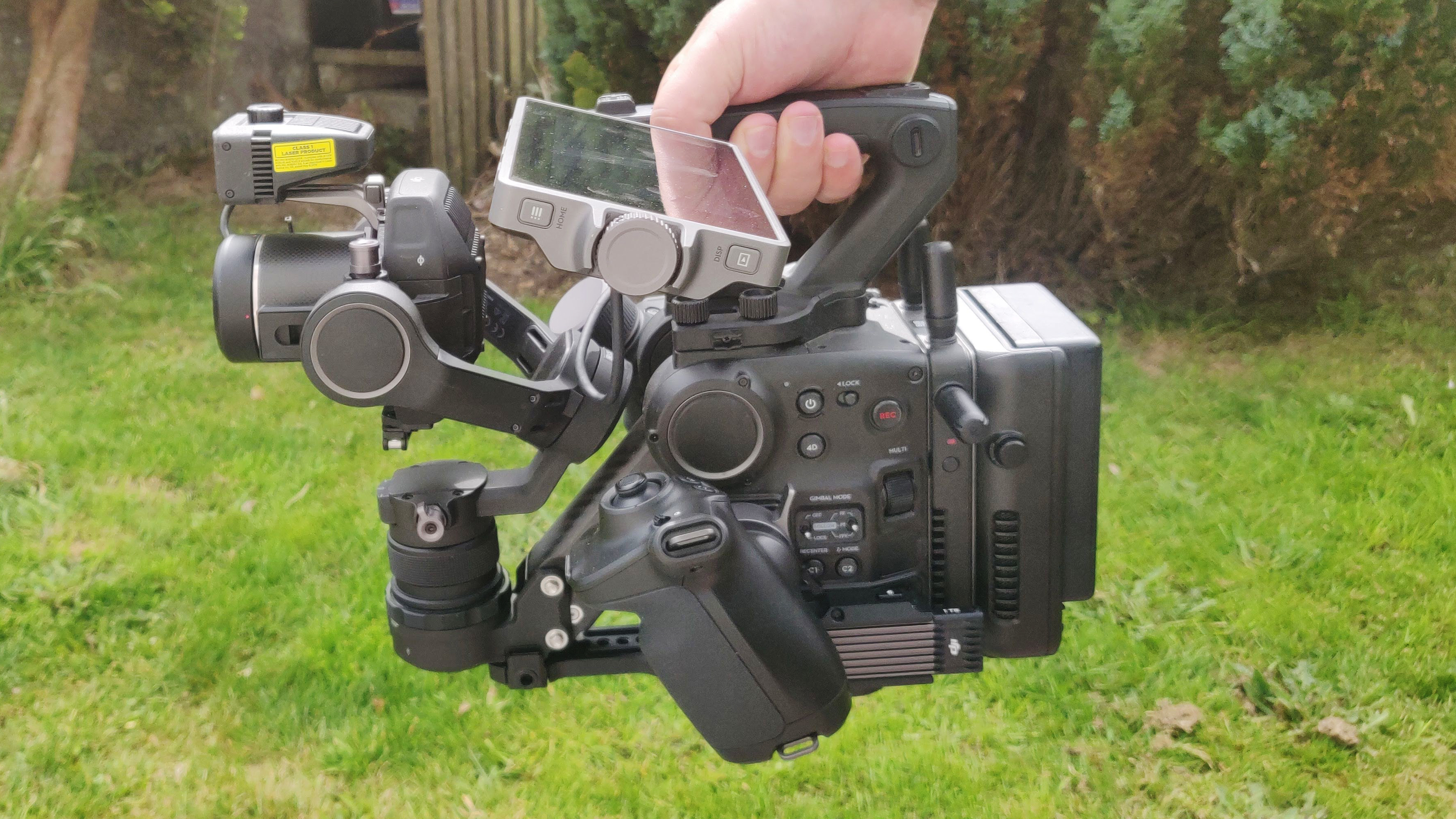
To handle the DJI Ronin 4D is much like any other cinema camera. It has a hefty weight to it, but not so much that you would want to carry it on a tripod all day – just enough to let you know that it's pro-grade gear and that it can take on some serious work.
If you enjoy shooting handheld, the DJI Ronin 4D is pleasure to use, thanks to you a well-positioned top handle that features a custom function button, as well as the gimbal control for vertical movement. The sides are multi-positional, so it doesn't matter how you like to hold your camera, the Ronin 4D feels good. The side handles are also full of functionality. The left features a joystick for full control of the gimbal's movement in 4D mode or Z-mode, with two buttons for exposure and AF tracking.
On the right side handle you again have two buttons, this time for mode and peaking to make sure everything you want sharp is in focus. To the right there is a record button, but you might get confused at first as this only appears red once pressed and could be confused with a custom button. On top of the unit there's a nicely padded turn dial which can control the focus of your DJI DL lenses.
I found this to be a rather odd place to put it and would have liked to see an option for this to be placed on the left hand grip, I am right handed and I like to hold my cameras with my dominant hand, and focus with my left – it took a bit of getting used to and I managed, but if you shoot the way I do, you can just pick this up and shoot your next film.
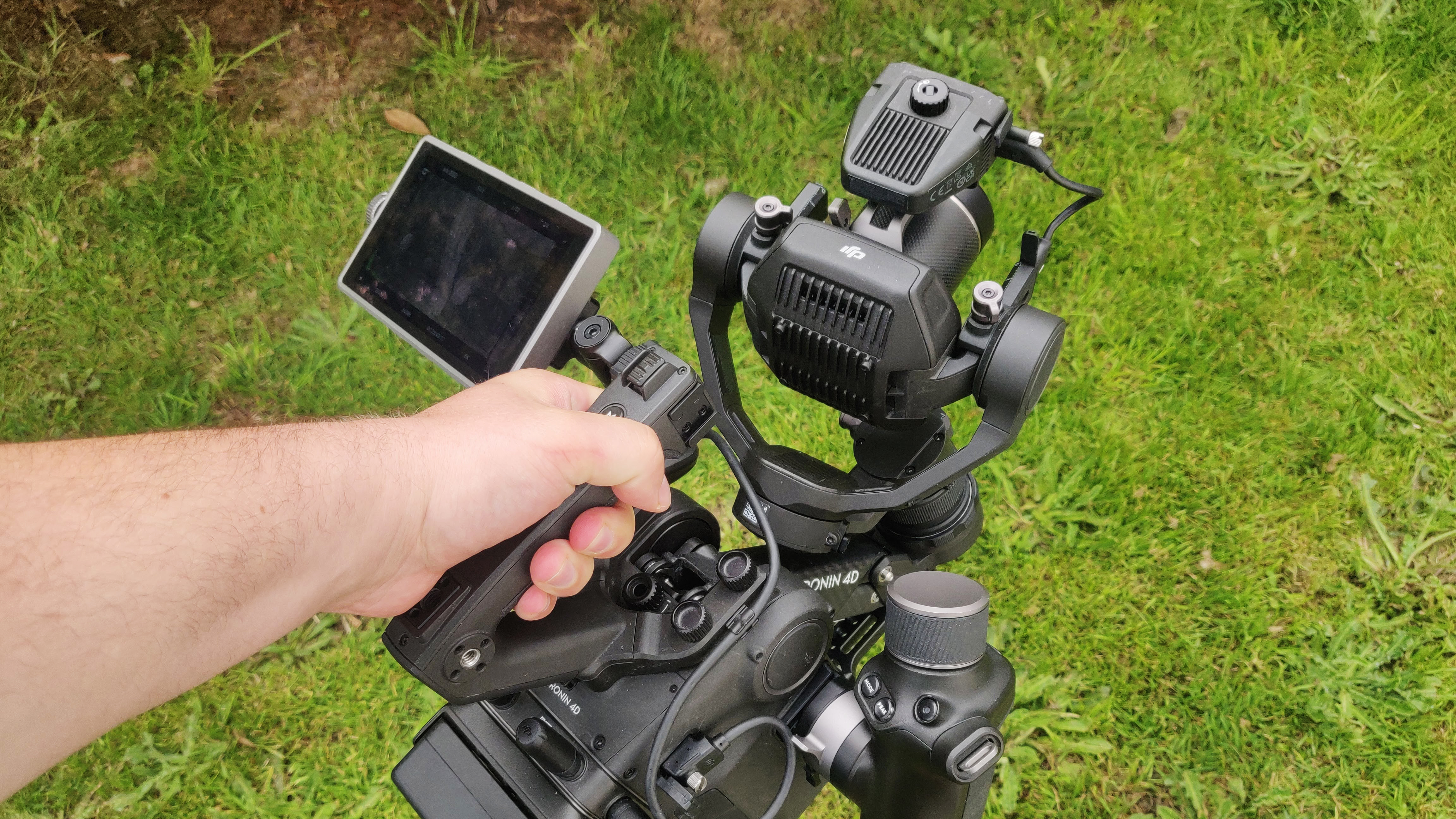
The screen on the DJI Ronin 4D is one of the best I have used, it is super bright in harsh sunlight, so you will be able to compose and focus with easy, and being touch screen you are also just a tap away from getting the setting you want, which is great when you want to make a quick adjustment on the fly. One thing I will say is you can only mount the monitor to either the left or the right ride of the camera rig, not top mounting here – which again, is my style of shooting. If you want to move it to either side, simply unlock it, slide off and place to the opposite side and lock on.
What is so easy with the DJI Ronin 4D is its ease and quickness of use. If you are a solo filmmaker and every second counts then the Ronin 4D really is a camera that can deliver. Its 6K files are outstanding and withhold a lot of detail, so you can get the perfect color-grade every time.
One thing to note is that DJI offer a 1TB SSD option with the 6K, and if you get this you can record 6K for around 70 minutes. However, if you opt for just the CF Express you will only be able to shoot in 4K, which isn't great for a camera that is described as 6K. Ideally, it would be able to shoot at any resolution, max or 1080p, on either card solution.
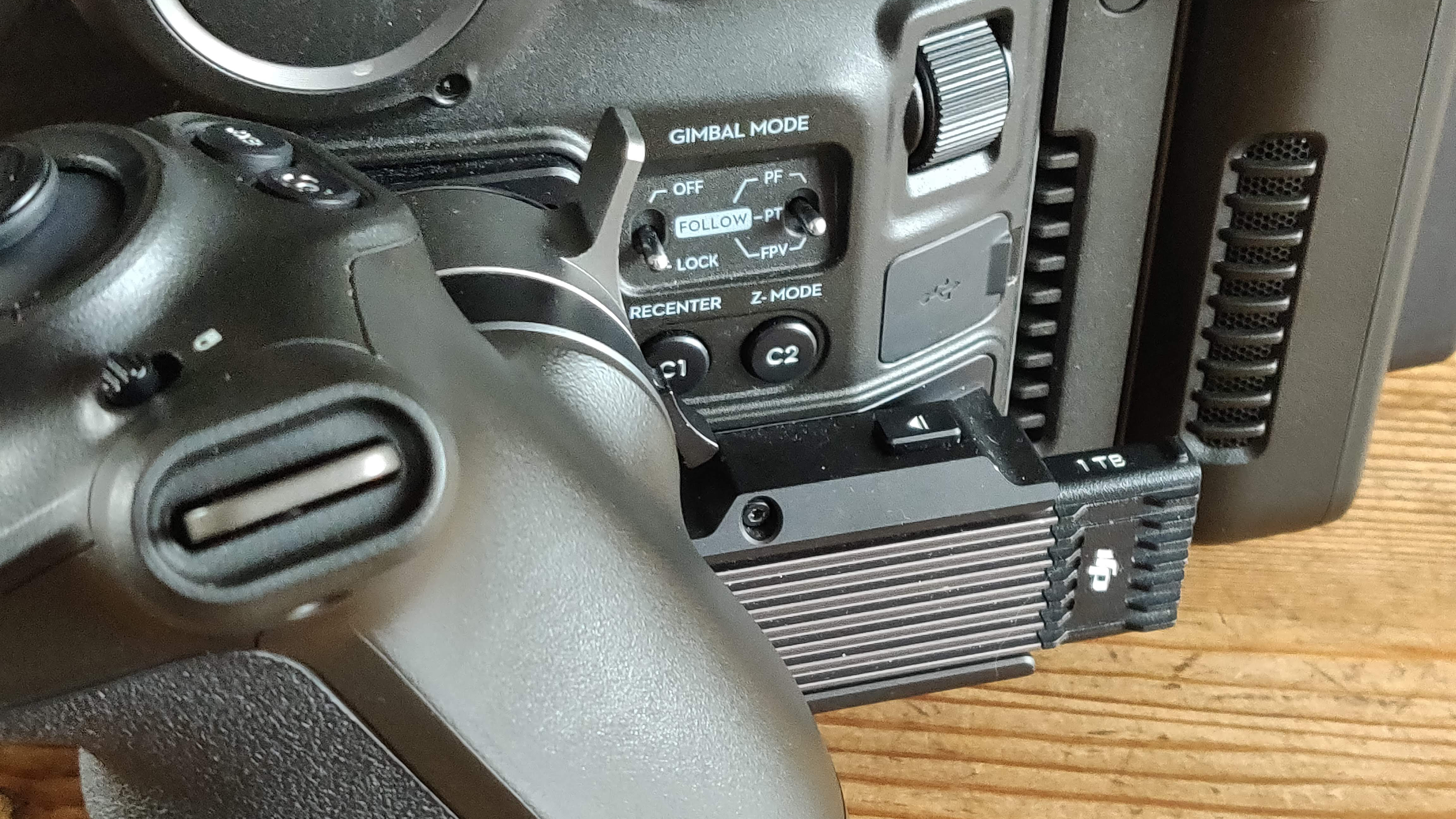
With any first generation product there are often issues or workarounds that you have to try to get what you want out of a camera.
I shoot in a more traditional style of cinematography where I like to have a monitor and EVF attached at the same time, so if I switch from hand held to tripod I can change my style quickly, the Ronin 4D does not have an EVF offering which is slightly strange for a cinema camera, but this is an entirely different breed of camera all together so I will let them off this time.
I think the most clunky or slightly half-baked idea that if you want to shoot handled in the traditional sense, with no gimbal or stabilization and get a bit of motion blur to emphasis and emotion in your shots you have to lock the gimbal at all sections. This is the only time consuming thing on the DJI Ronin 4D, and I get it it takes 30 seconds, but if you are on a shoot or set knowing you want varied types of shots, that time soon adds up throughout a shoot. Battery life is fantastic being able to shoot for around 45/50 minutes on one battery is impressive, but these are also DJI's own creation, so there is no way of rigging up your massive V-mount or Gold-mound batteries to the Ronin 4D, so make sure to buy at least two.
One impressive feature is the wireless video transmission and camera control, if you normally working in a two-person crew or DP on big sets, passing the screen to the director, first AC , focus-puller - truly an inspiration. Shoot a lot of car commercials, simply rig the Ronin 4D to your camera car and take the monitor and controls with you and have full control over all camera setting while on the move, its like magic but better, it works every time and never cut out on testing.
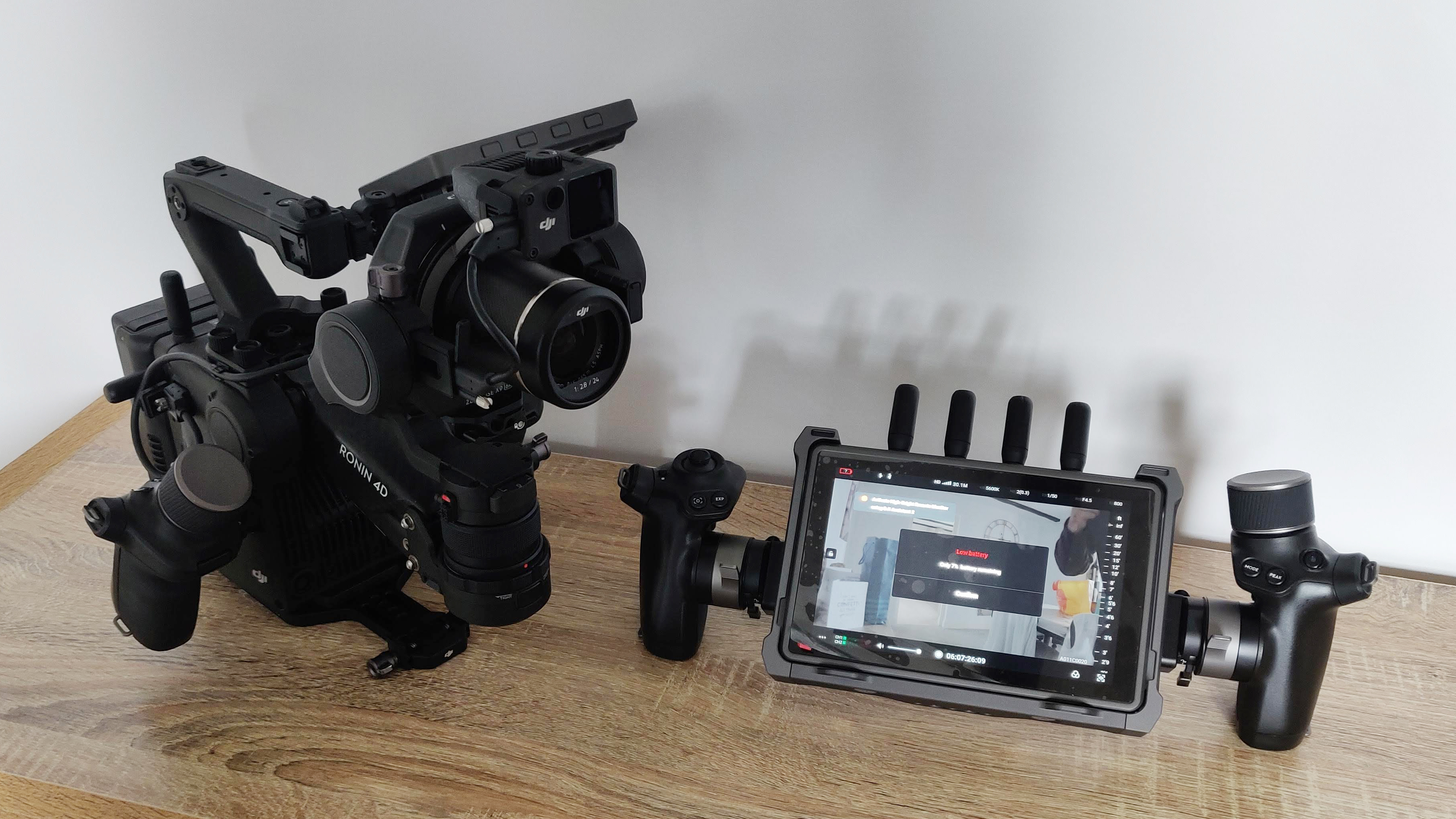
DJI Ronin 4D Verdict
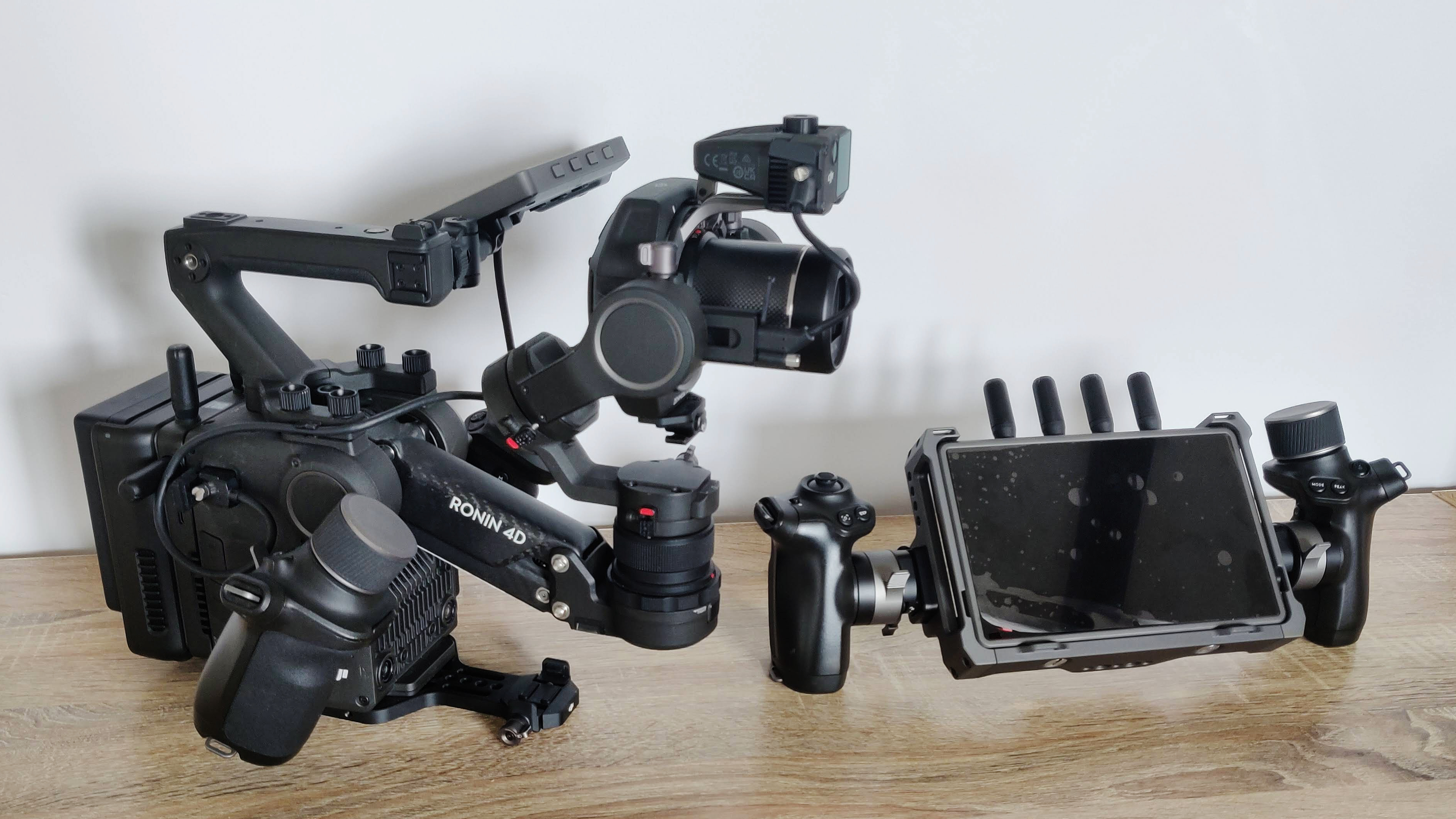
The DJI Ronin 4D might look like a strange beast to more traditional filmmakers, but this camera really packs a punch and I think those who are always using a gimbal on their existing rigs will really benefit from the Ronin 4D. There are some quirks which you are going to have to deal with on this first generation product, but for DJI's first real try at a full blown cinema camera, the results are really impressive.
More user customization would be a big benefit in a version 2.0, as the lack of an EVF or electronic gimbal locking is an issue, likewise with monitor placement, and not allowing for v-mount/gold-mount battery options just seems rather odd to me. Despite these small grumbles, this feels like a camera from the future and it offers many things in an all-in-one package at an appealing price point for those looking to take their cinematography seriously.
I would say that the DJI Ronin 4D is the start of more true hybrid cinema cameras appearing in the market and it could sit within the best cinema cameras. Its do-anything, shoot-anything design makes it an appealing option for upgraders and early adopters who are looking to ride the wave to the latest tech in the industry while saving them money, weight, crew and more.
Read more:
Best anamorphic lenses
Best cameras for filmmaking
Best cine lenses

For nearly two decades Sebastian's work has been published internationally. Originally specializing in Equestrianism, his visuals have been used by the leading names in the equestrian industry such as The Fédération Equestre Internationale (FEI), The Jockey Club, Horse & Hound, and many more for various advertising campaigns, books, and pre/post-event highlights.
He is a Fellow of the Royal Society of Arts, holds a Foundation Degree in Equitation Science, and holds a Master of Arts in Publishing. He is a member of Nikon NPS and has been a Nikon user since his film days using a Nikon F5. He saw the digital transition with Nikon's D series cameras and is still, to this day, the youngest member to be elected into BEWA, the British Equestrian Writers' Association.
He is familiar with and shows great interest in 35mm, medium, and large-format photography, using products by Leica, Phase One, Hasselblad, Alpa, and Sinar. Sebastian has also used many cinema cameras from Sony, RED, ARRI, and everything in between. He now spends his spare time using his trusted Leica M-E or Leica M2, shooting Street/Documentary photography as he sees it, usually in Black and White.
